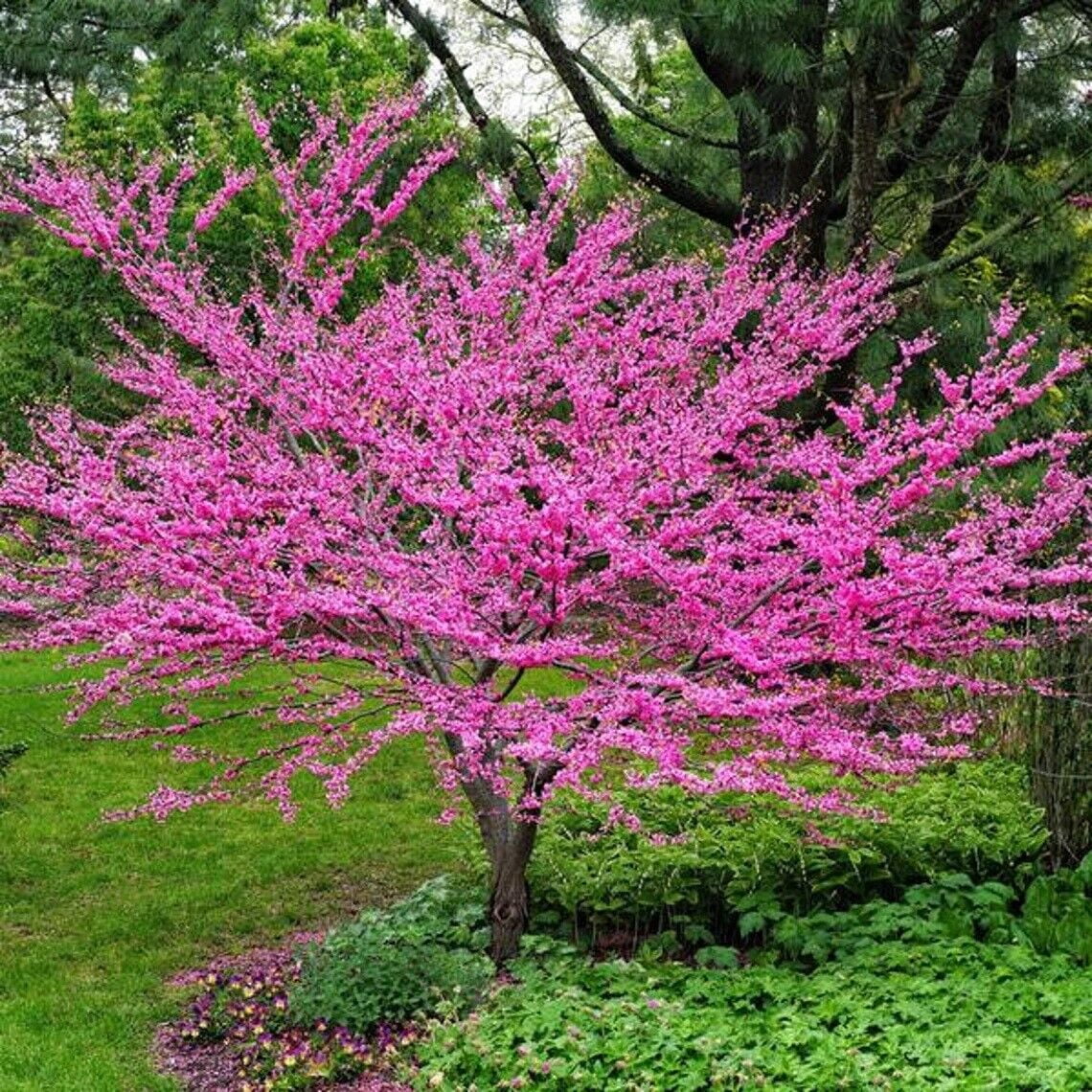Eastern Redbud

Full sun, Part shade
Well-drained, adaptable
Overview:
Cercis canadensis , commonly known as Eastern Redbud, is an enchanting deciduous tree native to eastern North America. Celebrated for its vibrant and profuse spring blooms, this small to medium-sized tree is a favorite in landscaping for its ornamental appeal and adaptability to various soil conditions.
Botanical Features:
- Scientific Name Interpretation:
- The scientific name, Cercis canadensis , offers insights into the plant's characteristics and its geographic origin. The genus name, Cercis , is derived from the Greek word "kercis," referring to a deciduous tree. The specific epithet, canadensis , indicates its connection to Canada, though the tree's natural range extends beyond Canada to the United States.
- Size: Eastern Redbud typically reaches a height of 20 to 30 feet (6 to 9 meters) with a spread of 25 to 35 feet (7.5 to 10.5 meters).
- Leaves: The heart-shaped leaves emerge as a reddish-purple in spring, turning to a dark green in summer and yielding attractive yellow hues in the fall.
- Flowers: The striking, pea-like flowers appear in early spring before the leaves, covering the branches in shades of pink or lavender. These blossoms make the Eastern Redbud a standout in spring landscapes.
Cultivation:
- Sunlight: Eastern Redbud thrives in full sun to partial shade. While it can adapt to various light conditions, it produces the most vibrant blooms in full sunlight.
- Soil: Well-drained, slightly acidic to neutral soil is ideal. The tree is adaptable to different soil types, including clay and loam.
- Watering: Regular watering is essential, particularly during dry periods. However, the tree is relatively drought-tolerant once established.
- Propagation: Eastern Redbud can be propagated from seeds, though cultivars are often propagated through grafting or cuttings.
Uses:
1. Ornamental Tree: Eastern Redbud is widely used as an ornamental tree in residential and public landscapes, prized for its captivating spring blossoms.
2. Wildlife Habitat: The tree's flowers attract pollinators, and its seeds are consumed by various birds and small mammals.
3. Erosion Control: With its dense root system, Eastern Redbud is effective in preventing soil erosion.
Maintenance:
- Minimal pruning is required to maintain a desirable shape.
- Mulching helps retain soil moisture and regulates temperature.
- Pests and diseases are generally not major concerns, making Eastern Redbud a low-maintenance tree.
In Conclusion:
Cercis canadensis, the Eastern Redbud, stands as a picturesque and adaptable tree, adding charm to landscapes with its early spring blossoms and vibrant foliage. Whether used as a focal point in gardens or to enhance natural settings, this tree brings a touch of elegance to diverse outdoor spaces.